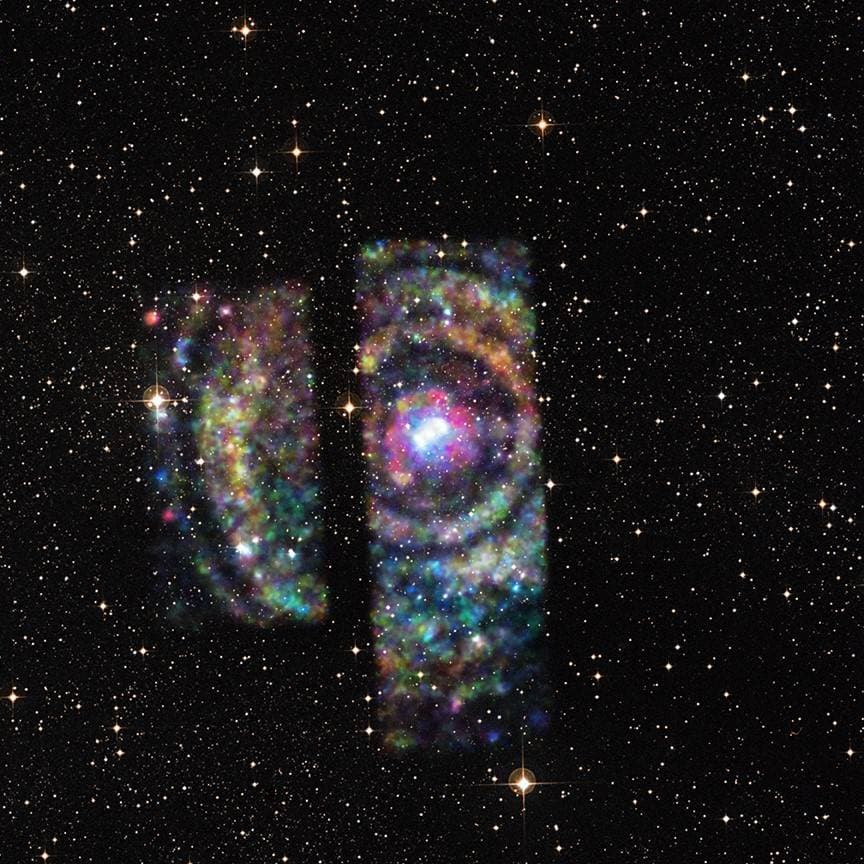As I mentioned in a previous post, there are a few ways to measure the distance of a star in our galaxy. Unfortunately when the Luminosity is unknown and it is too far away to use parallaxes method, we are stumped for ways to estimate the distance.
Once in a while though we get lucky and we have events that allow us to calculate distance in other ways. Circinus X-1 is one of these events. Circinus X-1 is an x-ray binary; an x-ray binary is a system of two stars where material from one companion is accreting on the neutron star, which in turns emits x-rays.
Circinus X-1, in particular, is also surrounded by gas clouds probably created when it went supernova about 2500 years ago. It is believed one of the youngest known x-ray binaries.

The X-ray echo of Circinus X-1 as seen by NASA’s Chandra.
The gas clouds are the key to calculate its distance. An international team of astronomers, using the NASA’s Chandra telescope, has detected bright rings in the gas cloud due to the scattering of x-rays on the dense material (well, dense for interstellar space). By measuring the ring angular size and the interval between x-ray bursts, scientists were able to calculate the true distance of the system: 30,700 light years.
Read the Paper:
Lord of the Rings: A Kinematic Distance to Circinus X-1 from a Giant X-Ray Light Echo,
